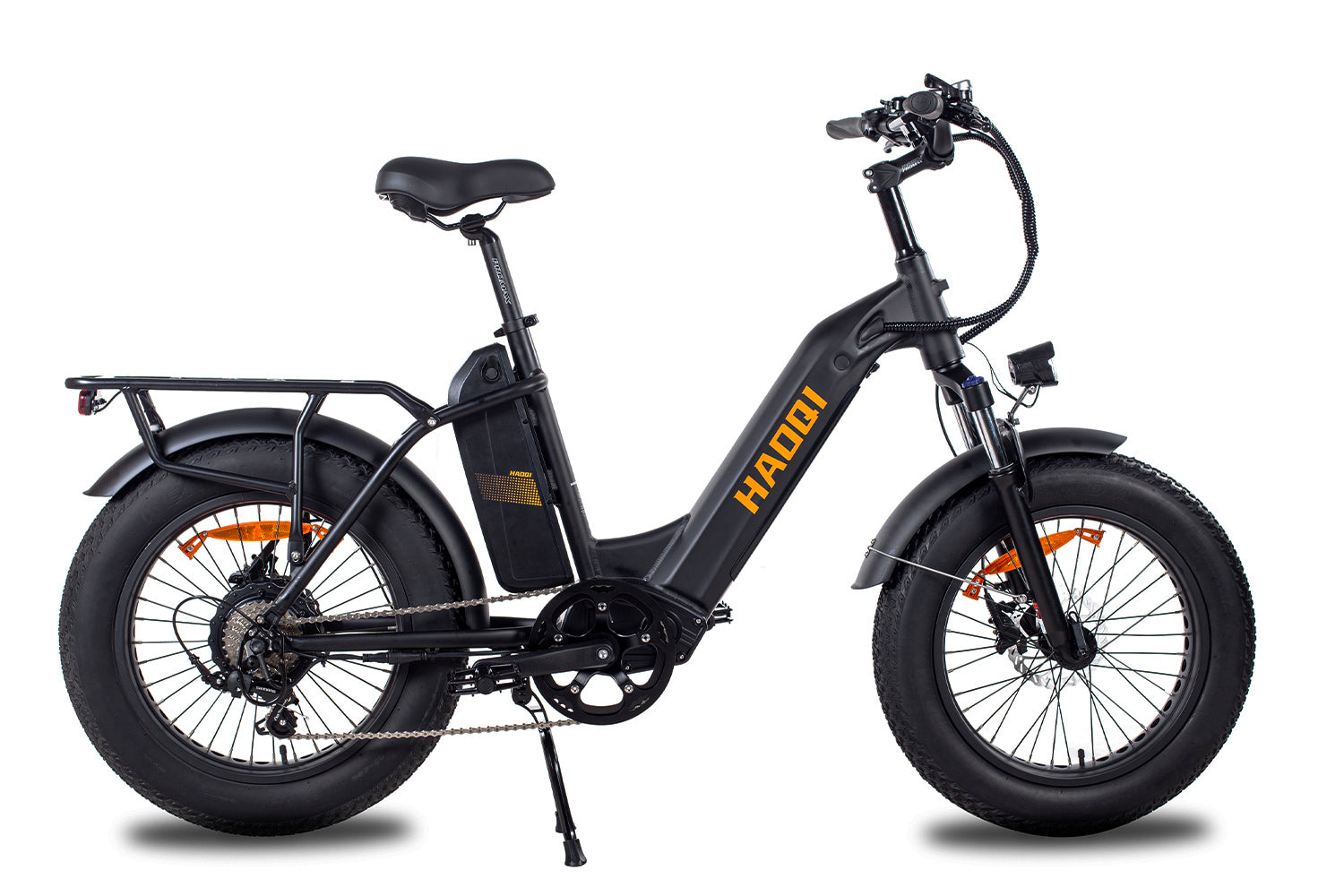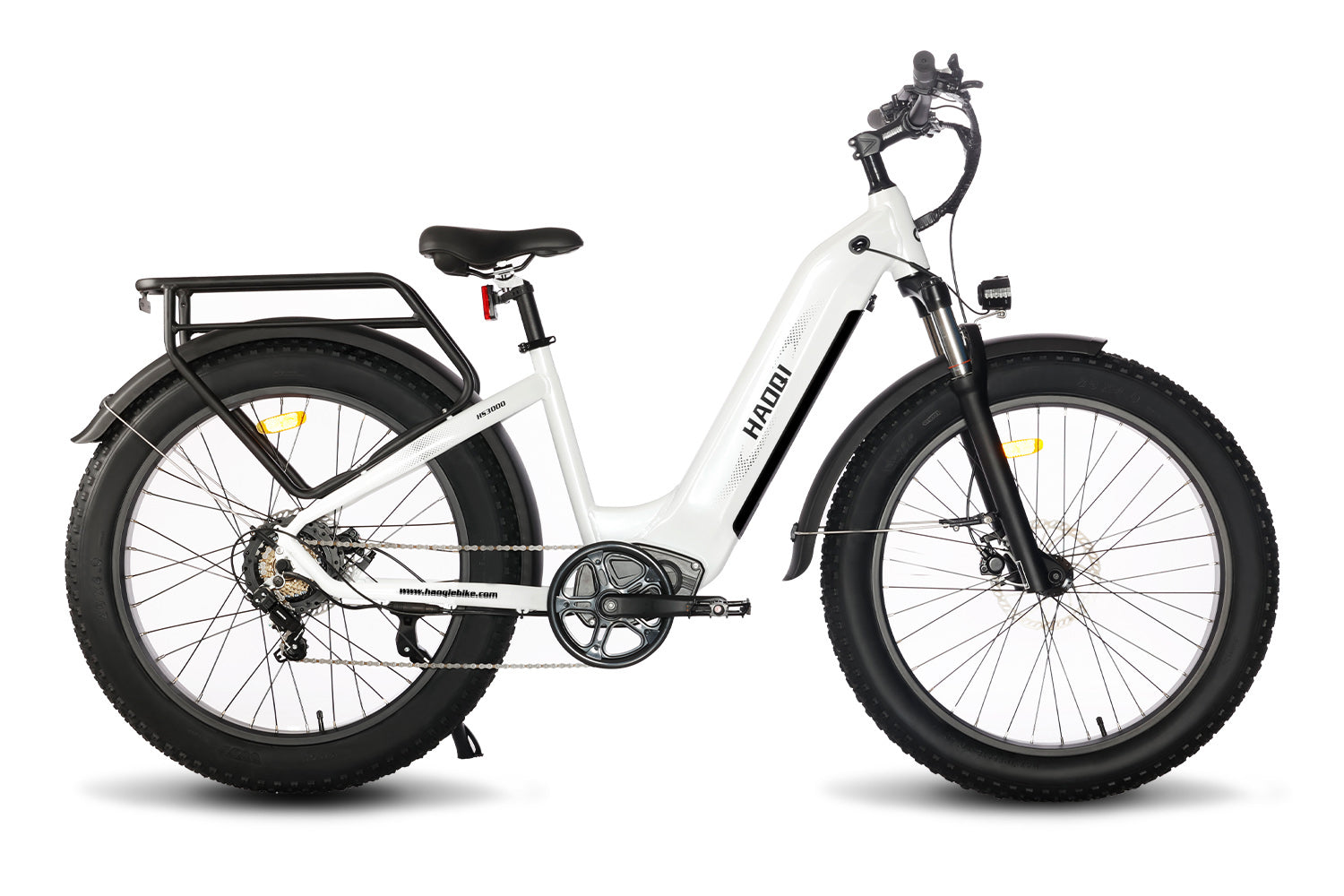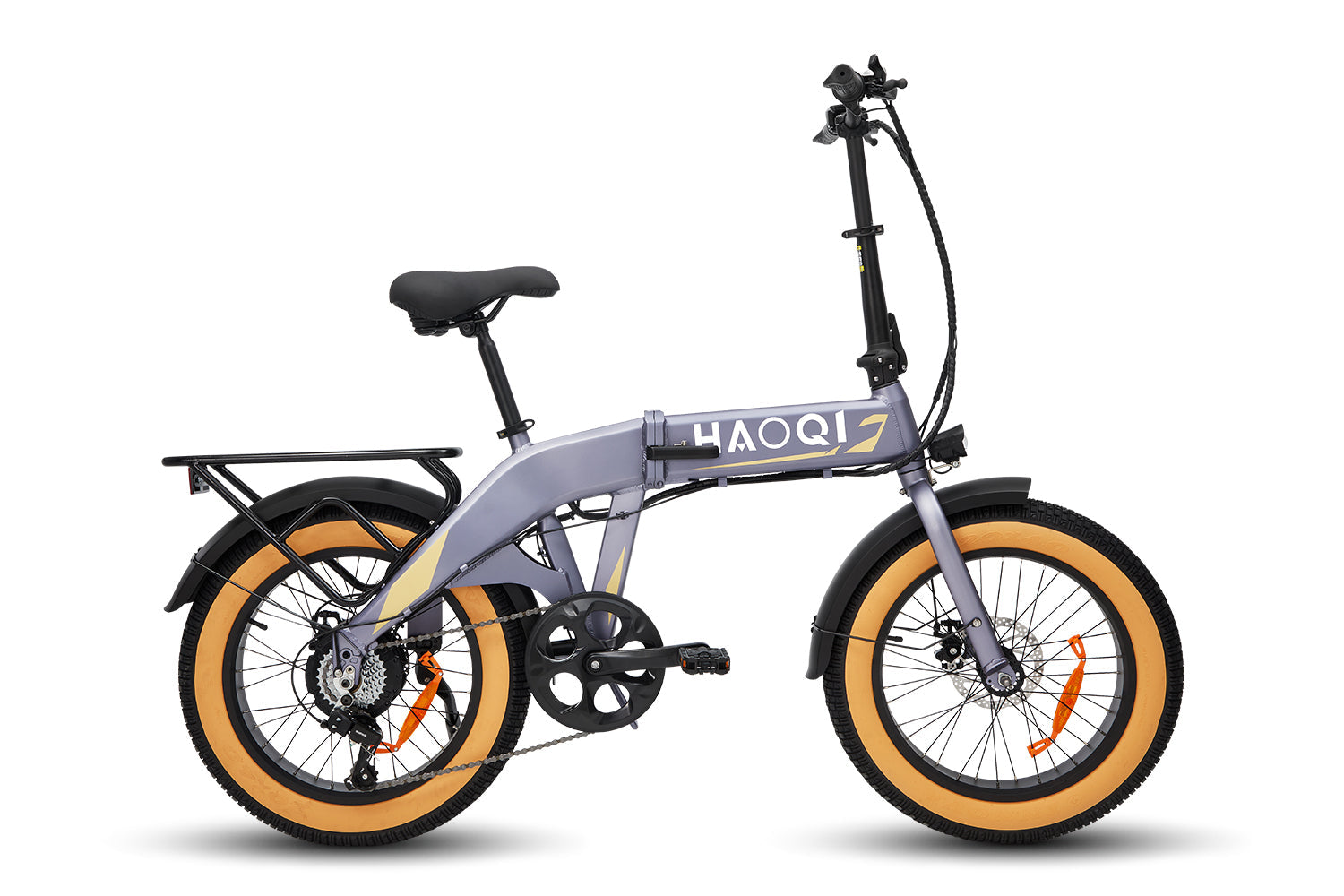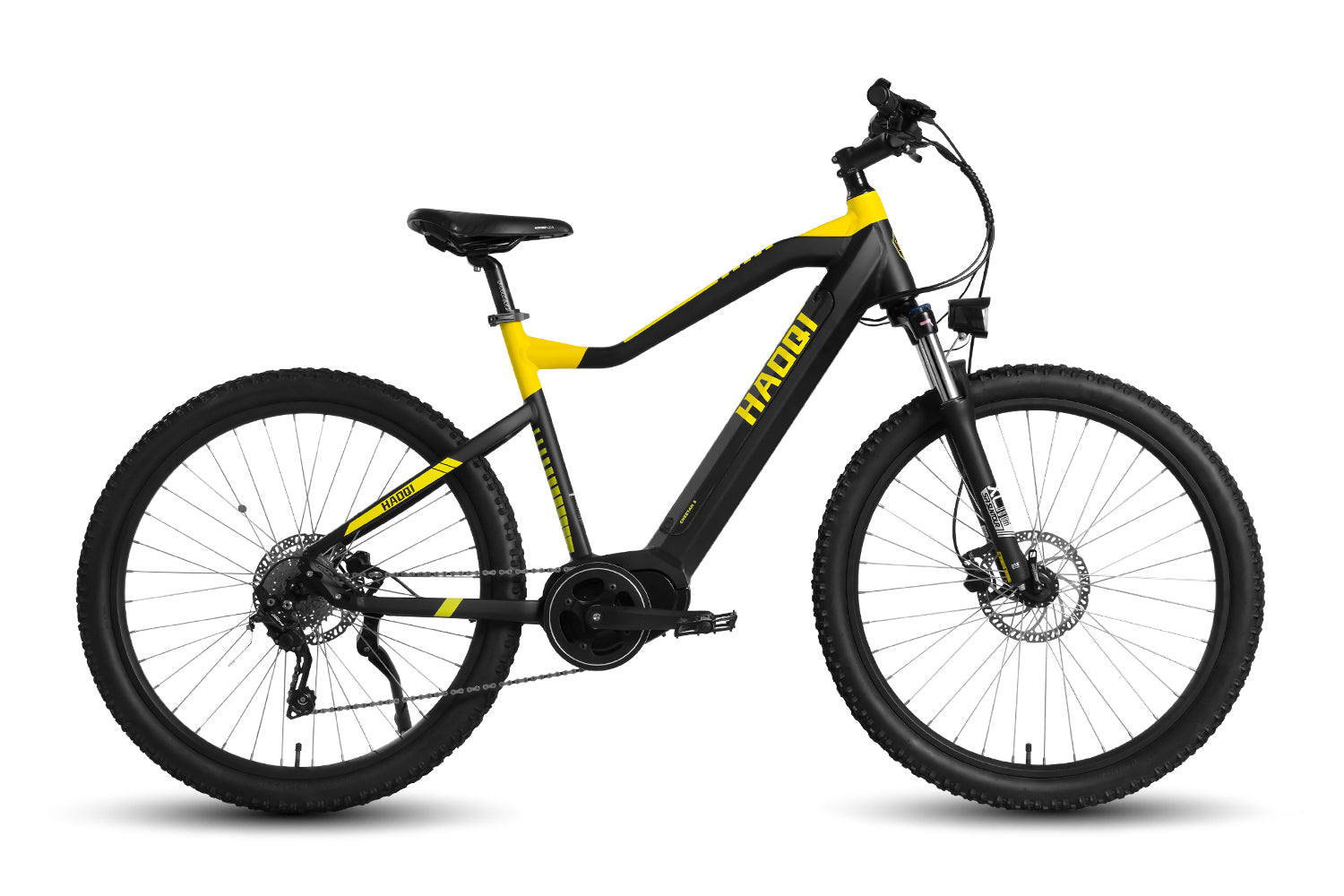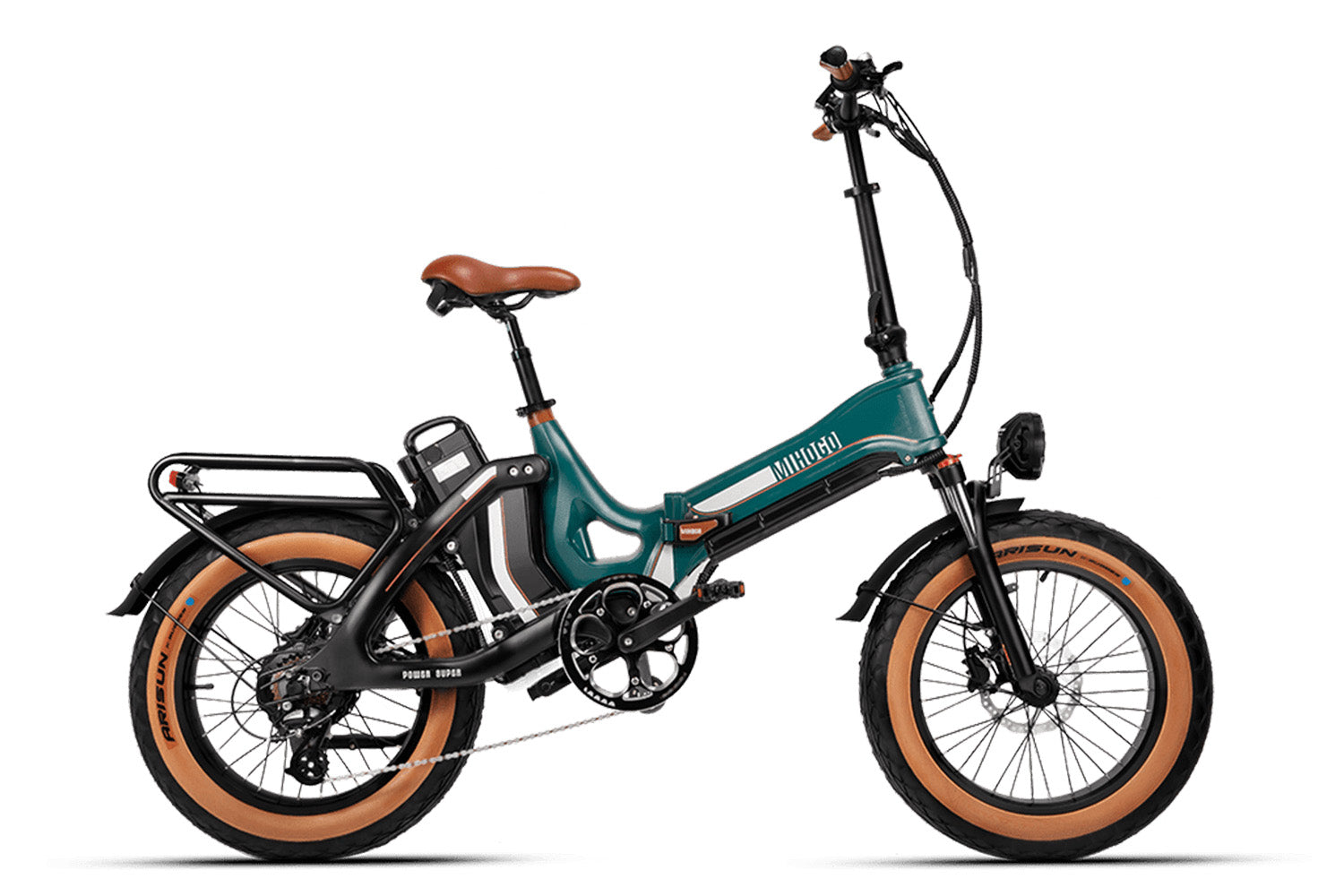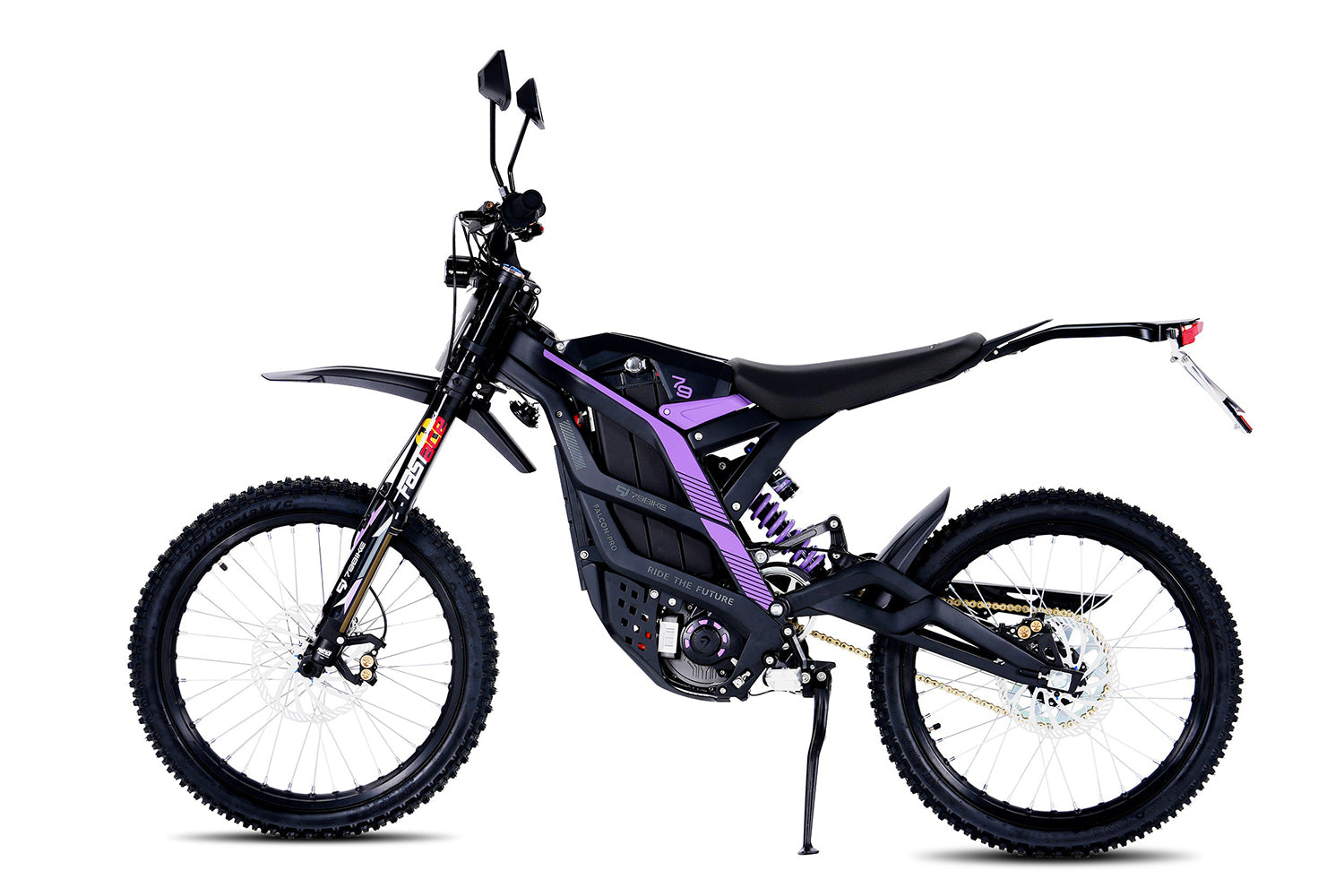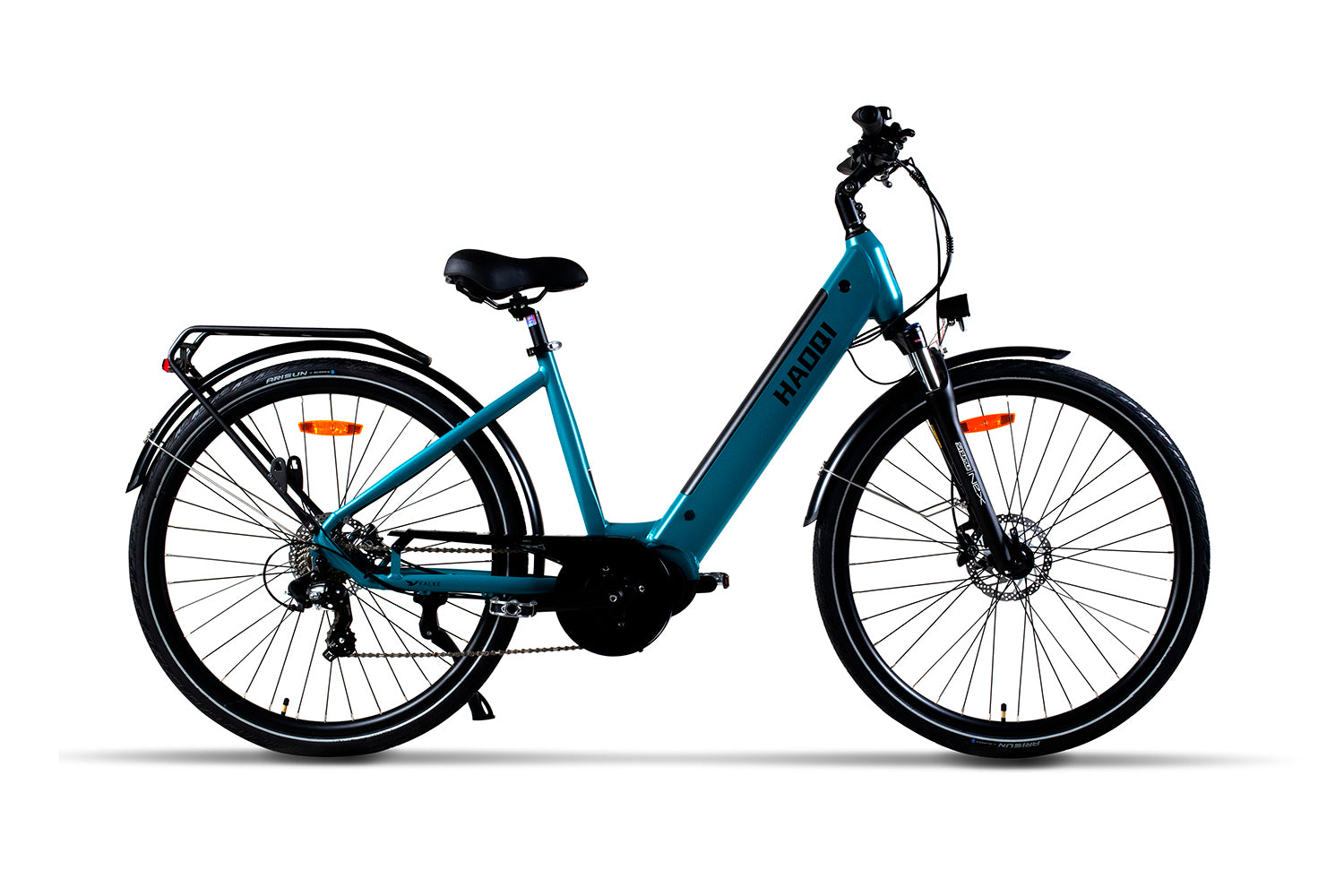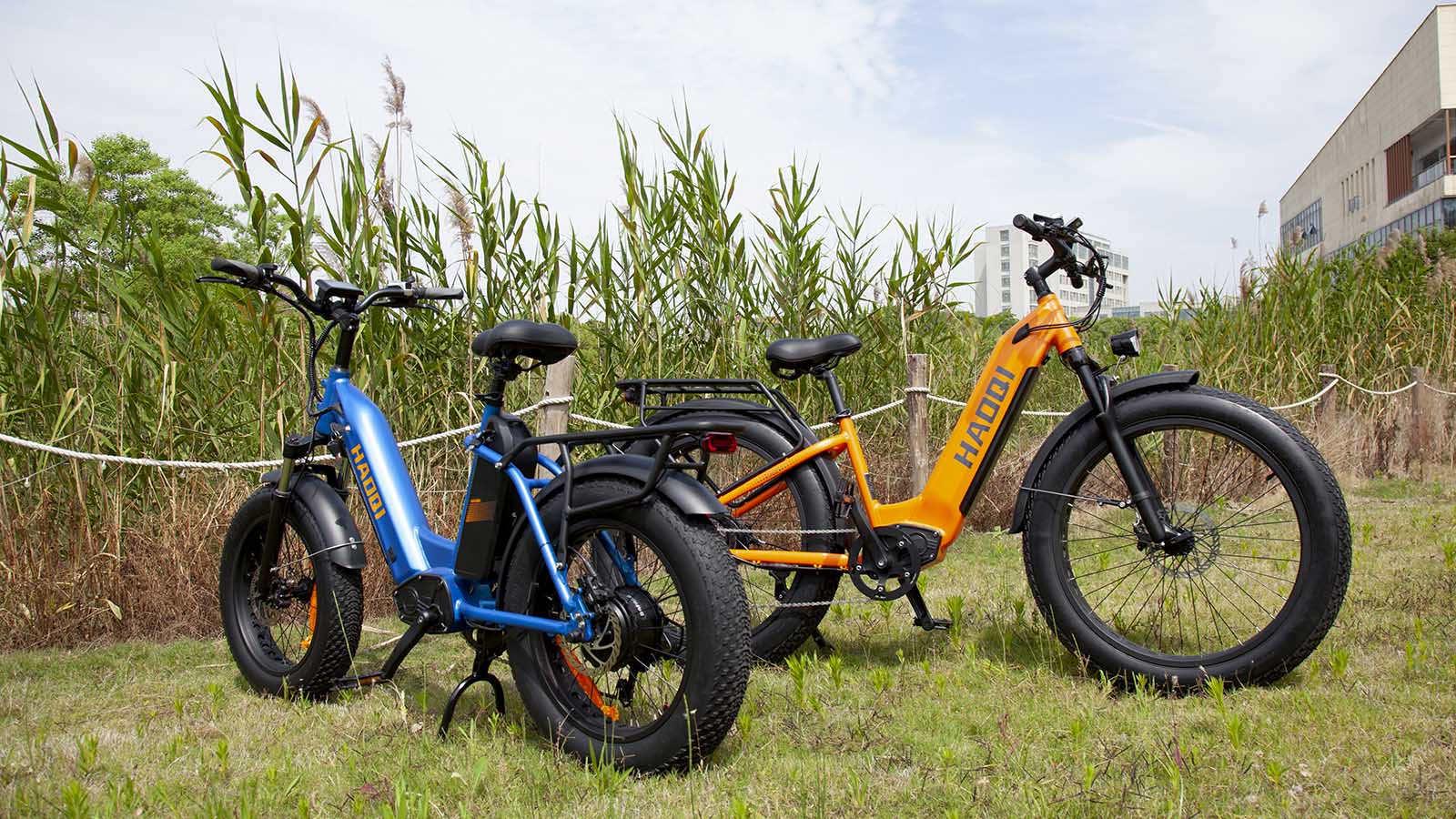Riding an e-bike for the first time is an exciting experience that opens up new possibilities for commuting, leisure and adventure. In this comprehensive guide, we'll walk you through the key points to check before your first ride, adjustments to optimize your comfort, and essential first-ride tips. We'll also provide techniques for navigating city streets and trails to ensure you have an enjoyable experience every time you saddle up.

What should you check before your first ride?
It's important to make sure everything is working properly when you ride an e-bike for the first time. Here are the most important aspects to check:
Battery charging: The battery is the heart of your e-bike, so it is important to make sure it is fully charged before you start riding. Always check the battery indicator beforehand.
Tire Pressure: Properly inflated tires are critical for a smooth ride and optimal control. Check the manufacturer's recommended tire pressure, usually found on the sidewall of the tires, and use a pump with a pressure gauge to make sure they are properly inflated.
Brakes: Check both the front and rear brakes. Squeeze the brake levers and make sure they engage smoothly and effectively. If the brakes feel loose or don't stop the bike quickly, they may need to be adjusted or replaced.
Lights and reflectors: Make sure all lights and reflectors are working and visible. This includes front and rear lights and side reflectors on the wheels. Proper lighting is especially important for visibility when riding in low light conditions.
Chain and gears: Check the chain for proper lubrication and tension. Cycle through all the gears to make sure they shift smoothly. A well-maintained chain and gear system will make for a more efficient and enjoyable ride.
Handlebars and saddle: Make sure the handlebars and saddle are securely fastened and adjusted to your comfort level. The handlebars should be firm without wobbling and the saddle should be adjusted to the correct height for your leg length.
How to start your e-bike and adjust it for comfort
Before you head out on your first ride, it's important to make sure everything is set up correctly. Below, we'll show you how to start your e-bike and make the crucial comfort adjustments to ensure a smooth and enjoyable ride.
Saddle height adjustment:
Position your bike: Place your bike on a flat, stable surface and use the stand to keep it upright.
Getting on the bike: Sit on the saddle and place your feet on the pedals.
Put the pedal in the lowest position: Turn one of the pedals to the lowest position of the pedal stroke.
Check leg extension: Your leg should be almost fully extended at the bottom of the pedal stroke, with a slight knee angle. This position ensures that you can pedal efficiently without overextending your knee.
Adjust as needed: If your leg is too bent or too straight, adjust the saddle height by loosening the seat tube clamp, adjusting the saddle up or down, and then tightening the clamp securely.
Handlebar and fork adjustment:
Handlebar height: Adjust the handlebars to a comfortable height. Ideally, they should be level with or slightly above the saddle. This position helps reduce pressure on the back and shoulders.
Handlebar angle: The handlebar should be angled so that your wrists remain straight and comfortable when gripping. Adjust the angle by loosening the bolts on the stem, setting the desired angle, and then tightening the bolts again.
Front Fork Alignment: Make sure the front fork is properly aligned and securely fastened. The fork should be perpendicular to the ground and centered with the front tire for optimal handling and stability. Tighten any bolts or quick releases to secure the fork.
Checking the frame and stand:
Frame inspection: Check the frame for visible damage such as cracks, dents or deformation. A stable frame is crucial for safe riding.
Kickstand stability: Check that the kickstand is securely attached to the frame and provides stable support when placed in a standing position. The bike should stand upright without tipping or wobbling.
Tighten connections: Make sure all bolts and fasteners on the frame and stand are properly tightened. Loose components can lead to instability and possible accidents.
Important safety tips for first-time e-bike users
Now let's look at safety. Here are important tips to keep first-time e-bike users safe and confident on their adventures:
Get to know your e-bike: Before you set off on your e-bike adventure, take the time to familiarize yourself with its features. Practice starting, stopping and maneuvering in a safe, open space to gain confidence and become familiar with the controls.
Always wear a helmet and knee pads: Protect your head and knees by wearing well-fitting gear every time you ride your e-bike. Choose a helmet that meets safety standards and make sure it fits tightly before hitting the road. Additionally, consider wearing knee pads to protect your knees from injury in the event of a fall or collision. Your brain and knees will thank you!
Know your route: Plan your route in advance. Familiarize yourself with bike lanes, avoid busy roads when possible, and pay attention to the terrain—especially when riding on trails. Apps and GPS devices can help you navigate more easily and avoid getting lost.
Obey traffic rules: Like any other road user, e-bike riders must obey traffic rules and signals. Ride in the direction of travel, use hand signals for turns, and obey speed limits. Be predictable and courteous to other road users to ensure a smooth and safe ride.
Be visible: Make sure your e-bike is equipped with front and rear lights. Increase your visibility by using reflective tape on the frame and accessories. Good visibility reduces the risk of accidents, especially in low light conditions.
Stay alert and vigilant: Keep your eyes and ears open when riding your e-bike. Scan the road for potential hazards such as potholes, debris and pedestrians. Stay focused and avoid distractions such as texting or listening to music while riding.
Keep your distance: Maintain a safe distance from other vehicles, especially when you are behind large vehicles that may not have a clear view of you. This safe distance will not only give you more reaction time, but will also make you more visible to other drivers.
With these important safety tips, you'll be ready to hit the road with confidence and caution. Make your journey even better with HaoQI e-bikes! With their durability and innovative features , HaoQI e-bikes offer the perfect combination of performance and comfort, making them ideal for any adventurer. Ready to ride smarter and safer? Explore the possibilities with HAOQI and experience the future of e-biking today.
Techniques for navigating city streets and trails
Now that you're equipped with the essential safety tips, let's explore some effective techniques to confidently navigate both busy city streets and quiet trails on your e-bike.
Navigating city streets
Stay alert: Keep an eye out for cars, pedestrians and other cyclists. Try to anticipate what they will do next so you can always stay one step ahead. This will help you avoid sudden problems and make your ride smooth.
Position yourself wisely: Use bike lanes when they exist and obey traffic laws. If there is no bike lane, ride where drivers can easily see you, but not too close to the curb. This will help you avoid parked cars and road obstacles like potholes.
Signal your intentions: Let others know when you want to turn or change lanes by using hand signals. This increases safety and helps you communicate with motorists and other cyclists.
Adapt your bike to the terrain: Adjust your e-bike's settings depending on the terrain. Use a higher torque mode for rough trails and make sure your tires are suitable for both roads and gravel paths. This will help you better handle different routes.
Check the weather: Check the weather before you set off. Be prepared for changes and be aware that wet or icy conditions mean you should be extra cautious.
Drive defensively: Act as if others might not see you. Keep a safe distance from cars and always wear a helmet. Being cautious will help you stay safe and build your confidence on the road.
Conclusion
Riding an electric bike for the first time is an exhilarating experience that combines the joy of cycling with the thrill of speed and efficiency. As you embark on this adventure, remember to prioritize safety, adjust your e-bike for comfort, and familiarize yourself with local routes and regulations. Whether you're navigating busy city streets or quiet trails, riding an electric bike offers you a unique way to explore your surroundings in a fun, eco-friendly way. Enjoy the ride and every moment!
FAQ
How long does it take to get used to riding for the first time? The adjustment period for the first time riding usually takes a few weeks to a few months, depending on the individual's comfort level and frequency of practice. Most beginners feel more confident and balanced after a few consistent rides.
How to control steering and balance? To control steering and balance, focus on having a relaxed grip on the handlebars and using smooth, even movements to steer. Keep your eyes forward, not down. For balance, distribute your weight evenly and lean slightly into the turn when cornering while engaging your core. Practice regularly to improve coordination and stability.

